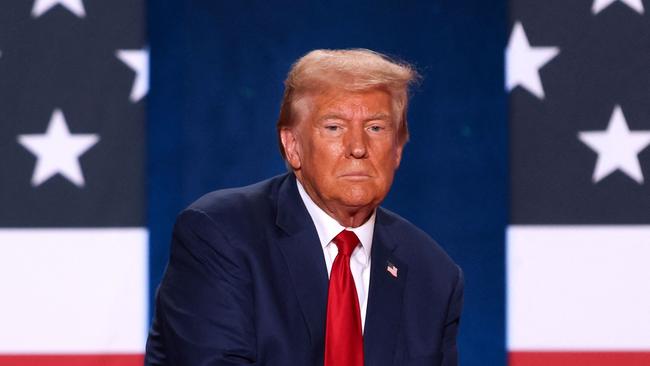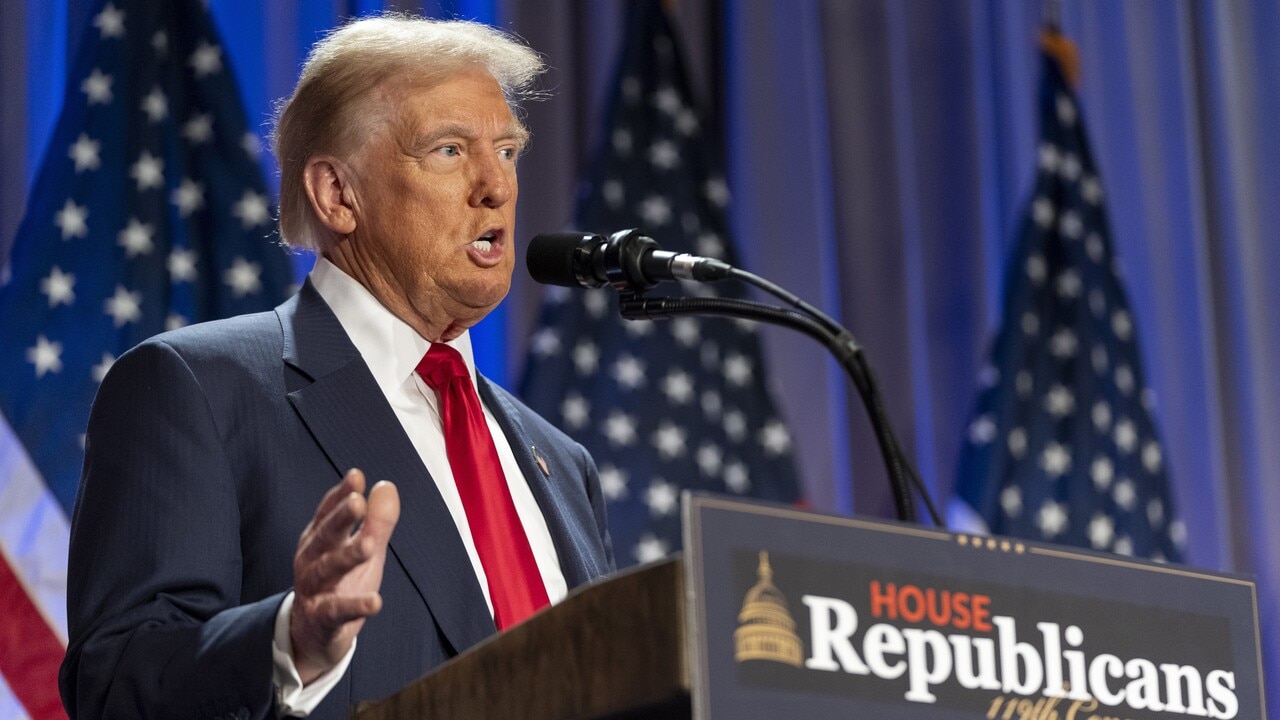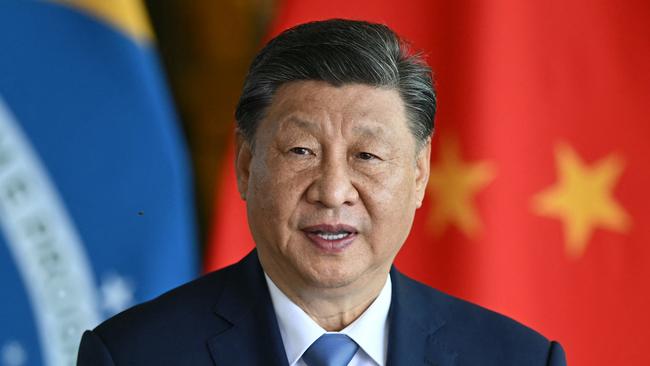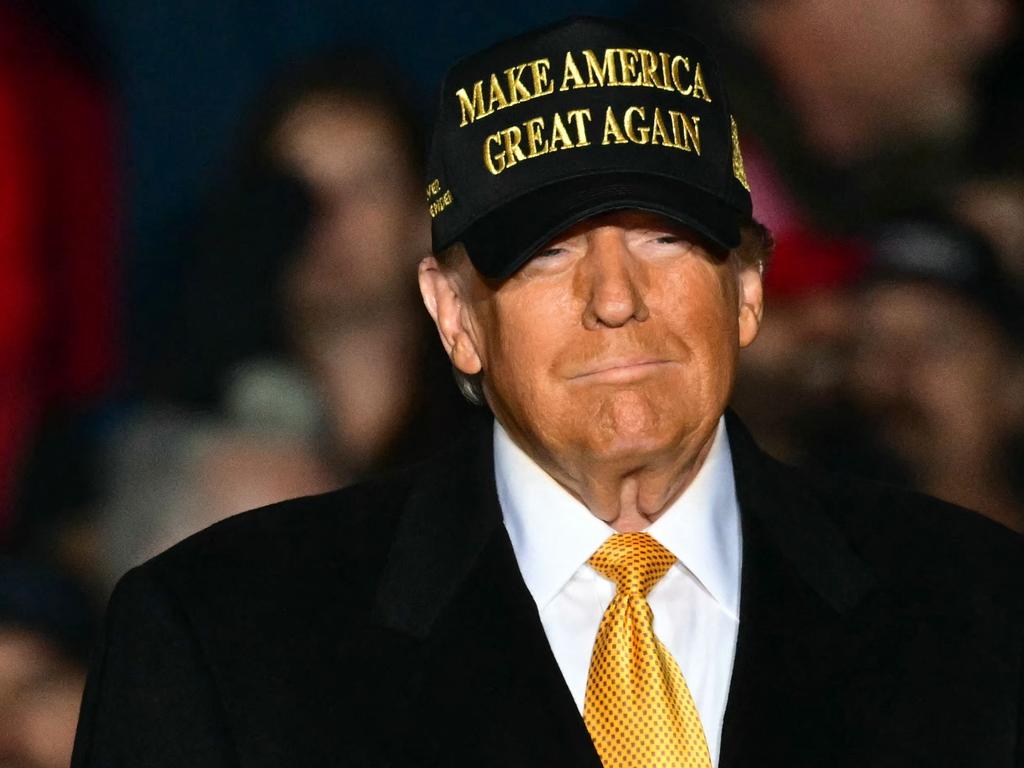Trade war 2.0: Trump drops tariff bombshell on China, Canada and Mexico
The US president-elect has put adversaries and allies, including Australia, on notice that he intends to deliver on his tough campaigning rhetoric regarding trade issues.

Donald Trump has begun his second trade war with China with an initial 10 per cent hit on top of existing duties as well as fresh 25 per cent tariffs for Canada and Mexico, as the president-elect puts allies and adversaries on notice that he intends to deliver on his tough campaigning rhetoric.
Beijing labelled the incoming US president’s announcements “irresponsible”, while Canadian Prime Minister Justin Trudeau made a direct appeal in a phone call shortly after Mr Trump announced the incoming tariffs in a series of social media posts.
In a flurry of posts that roiled world markets, the president-elect accused China of failing to follow through on promises to crack down on traffickers of fentanyl, all but accusing President Xi Jinping of complicity in the drug trade.
“I have had many talks with China about the massive amounts of drugs, in particular fentanyl, being sent into the United States – But to no avail,” he declared.
“Until such time as they stop, we will be charging China an additional 10% Tariff, above any additional Tariffs, on all of their many products coming into the United States of America.”
China’s national broadcaster CCTV said Mr Trump had made the threats “arrogantly”, while Chinese diplomats insisted Beijing had co-operated with Washington in trying to reduce the drug trade.
“China believes that China-(US) economic and trade co-operation is mutually beneficial in nature. No one will win a trade war or a tariff war,” said Liu Pengyu, a spokesman at the Chinese embassy in Washington.

The diplomat said China and America’s drug enforcement agencies had been working together since a San Francisco meeting between Mr Xi and outgoing President Joe Biden in 2023. “The claim that ‘China intentionally allowed fentanyl chemical precursors to flow into the United States’ is completely inconsistent with the facts and reality,” Mr Liu said.
The tariffs on China and Mexico were long telegraphed by Mr Trump during the campaign, but the threat of a 25 per cent tariff on all imports from Canada was met with disbelief in Ottawa. It will unnerve fellow close American allies including Australia, Europe, Japan and South Korea.
Canada’s government responded by pointing out that Ottawa buys more from the US than China, Japan, France and the UK combined, and provides about 60 per cent of all the oil the US imports from foreign countries.
“Canada and the United States have one of the strongest and closest relationships, particularly when it comes to trade and border security,” Canada’s Deputy Prime Minister, Chrystia Freeland, and Canada’s Public Safety Minister, Dominic LeBlanc, said in a joint statement.
Economists argued that the tariffs on Canadian energy would be inflationary for America. Many in Ottawa speculated that the threatened tariffs were a negotiating tactic, although there is no consensus on what Mr Trump was pressing for from Canada.
An identical 25 per cent tariff on Mexico had been flagged on the campaign trail by Mr Trump, who has long complained that America’s southern neighbour has not done enough to crack down on the fentanyl trade and flow of people into the US.
“This Tariff will remain in effect until such time as Drugs, in particular fentanyl, and all Illegal Aliens stop this Invasion of our Country!” Trump wrote.
The 10 per cent tariffs on China would build on the 25 per cent imposts Mr Trump had imposed on much of China’s economy in his first term and which Mr Biden has mostly left in place.

Mr Trump campaigned on the vow to raise tariffs on all Chinese imports to 60 per cent, while his former chief trade negotiator Robert Lighthizer has argued they should be raised until the US ends its trade deficit with China, which is currently almost $US400bn ($616bn).
The hits come at a terrible time for Beijing as China’s economy struggles to meet its target of “about 5 per cent” for 2024.
Chinese business figures were gloomy about the latest bad news, which follows an underwhelming economic rebound after the end of China’s confidence-sapping Covid restrictions.
“Many business people around me are losing hope,” one factory owner in Guangdong told The Australian.
Mr Trump’s supporters were ebullient. Elon Musk, the self-described “first buddy” of Mr Trump, said the new tariff plan would sharply push up the price of fentanyl. “This will be highly effective,” he posted on X.
Price of Fentanyl will rise sharply https://t.co/OOCm5oyRNj
— Elon Musk (@elonmusk) November 26, 2024
Vice President-elect JD Vance said it was “important for our friends and neighbours to not let poison into our country; if they fail to meet this basic obligation, they’re going to pay up.”
Former Australian ambassador to the United States Arthur Sinodinos told The Australian “the news about these forthcoming executive orders about tariffs underlines the fact that the president-elect is serious about tariff and trade issues”.
“They will be a priority along with immigration from day one. People should pay close attention to the commitments (Mr Trump) made in the campaign.”
George Washington University assistant professor of economics Steven Hamilton said the level of cross-border trade for North American production inputs meant the proposed tariff plan would be “strongly inflationary in the short run and economically damaging in the long run”.
But he said the indications showed that, for Mr Trump, tariffs were “not intended to be an across-the-board move to raise revenue, but rather are a bargaining chip in order to extract concessions from other countries – just as they were last time”.
Warwick McKibbin from The Australian National University said that the steps unveiled by Mr Trump represented a “dangerous step for global trade”. Professor McKibbin was one of three authors of a paper published in September by the Petersen Institute for International Economics that examined the impact of imposing 10 percentage points in additional tariffs on US imports from all sources and 60 percentage point additional tariffs on imports from China.
Assuming an in-kind response from other governments, Professor McKibbin and his co-authors found the 10 percentage point increase “results in US real GDP that is 0.9 per cent lower than otherwise by 2026, and US inflation rises 1.3 percentage points above baseline in 2025”.
“If China retaliates, Trump’s 60 percentage point hike leads to US real GDP falling more than 0.2 per cent below baseline by 2026, and US inflation climbs 0.7 percentage points above baseline in 2025,” they found.
Independent Australian economist Chris Richardson warned the new Republican administration would be fraught with uncertainty, amid continued questions over how Mr Trump’s promises would be translated into policies.






To join the conversation, please log in. Don't have an account? Register
Join the conversation, you are commenting as Logout